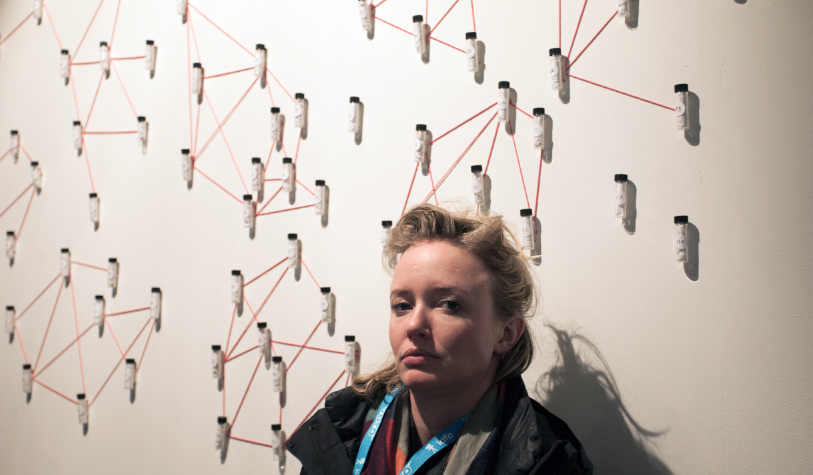Tega Brain is an Australian-born digital artist and environmental engineer whose work examines issues of ecology, data, automation, and infrastructure. She has created digital networks that are controlled by environmental phenomena, systems for obfuscating personal data, and a wildly popular, online smell-based dating service. Her work has been commissioned and exhibited by museums and galleries worldwide. She is a 2023 Creative Capital awardee, an Industry Associate Professor of Integrated design and Media, New York University, and her first book, Code as Creative Medium, is coauthored with Golan Levin and published with MIT Press.

Eyebeam Rapid Response Fellow (2020)
Eyebeam Project Resident (2015)
Visit the “Being Radiotropic” here
Being Radiotropic (2015): Open Flame, The Woods, Orbit (moon)
We are radiotropes. Just as other lifeforms orientate themselves in response to the sun’s radiation, many contemporary human behaviours are shaped by electromagnetic landscapes and signal topographies. We prepare for the quiet zone of the subway and notice how data speeds vary as we move between networks and across geographies.
Being Radiotropic is a series of eccentric wireless routers that explore this sensitivity and that asks how we might otherwise design our wireless infrastructures.
This project in its initial stages was featured in a group exhibition for the 2015 Project Residents titled, “Inside/Out”
About Eyebeam Exhibition: Inside/Out (2015)
Featured Artists: Kenneth Kirschner and Joshue Ott, Joanna Cheung, Tega Brain, Lilian Kreutzberger, and Collaborators Gene Kogan and Lisa Kori.
Lines don’t just separate; they’re also a meeting place, where surfaces are joined. This exhibition highlights five projects made during the 2015 Eyebeam project residencies, which probe at the porous boundary between the external and the internal, by examining how technologies make visible, audible or thinkable that which is normally hidden away inside.
A subtly interactive installation by Kirschner and Ott allows visitors’ gestures to take on a material form in light and sound. Cheung’s dialogues with her family inventively adapt computer code for its storytelling power. Using natural elements, Brain creates sensory experiences from the wi-fi networks which surround us. Kreutzberger’s paintings interrogate and layer invisible connectivities, while Kogan and Kori explore tools for digital performativity—and in particular, opera.
These works were examples of technology in an expanded sense: they are physical and conceptual tools by which we navigate and ultimately transform our contexts. This show was preceded by the exhibition Outside/In, which sought to bring digital imagery into dialogue with physical architecture.